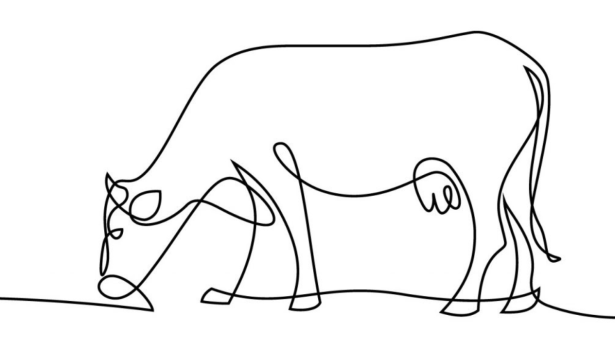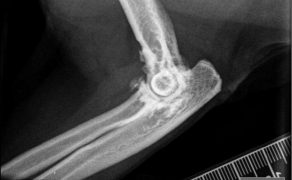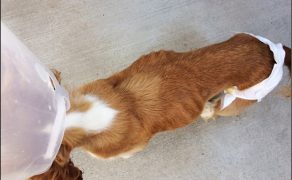Zespoły paraneoplastyczne (paranowotworowe) u pacjenta onkologicznego w praktyce weterynaryjnej
Piśmiennictwo
- John W.J., Patchell R.A., Foon K.A.: Paraneoplastic syndromes. [In:] DeVita V.T., Hellman S., Rosenberg S.A. (eds.): Cancer: Principles in Practice of Oncology. 5th ed., Lippincott-Raven Publishers, Philadelphia 1997, 2397-2422.
- Coss C.C., Bohl C.E., Dalton J.T.: Cancer cachexia therapy: a key weapon in the fight against cancer. „Current Opinion in Clinical Nutrition, Metabolism and Care”, 2011, 14 (3), 268-273.
- Muscaritoli M., Bossola M., Bellantone R. et al.: Therapy of muscle wasting in cancer: what is the future?. „Current Opinion in Clinical Nutrition, Metabolism and Care”, 2004, 7 (4), 459-466.
- Crowe S.E., Oliver J.: Cancer cachexia. „Compendium on Continuing Education for the Practicing Veterinarian”, 1981, 3, 681-690.
- Ogilvie G.K., Walters L.M., Salman M.D. et al.: Resting Energy expenditure in dogs with nonhematopoietic malignancies before and after excision of tumors. „American Journal of Veterinary Research”, 1996, 57, 1463-1467.
- Ogilvie G.K., Vail D.M., Wheeler S.L. et al.: Effects of chemotherapy and remission on carbohydrate metabolism in dogs with lymphoma. „Cancer”, 1992, 69 (1), 233-238.
- Chlebowski R.T., Herber D.: Metabolic abnormalities in cancer patients: carbohydrate metabolism. „Surgery Clinics of North America”, 1986, 66, 957-968.
- Herber D., Byerly L.O., Chi J. et al.: Pathophysiology of malnutrition in the adult cancer patient. „Cancer”, 1986, 58, 1867-1873.
- Fossum T.W.: Protein-losing enteropathy. „Semin Vet Med Surg (Small Anim)”, 1989, 4 (3),219-225.
- Strygler B., Nicor M.J., Santangelo W.C. et al.: Alpha1-anti-trypsin excretion in stool in normal subjects and in patients with gastrointestinal disorders. „Gastroenterology”, 1990, 99, 1380-1387.
- English R.V., Breitschwerdt E.B., Grindem C.D. et al.: Zollinger-Ellison syndrome and myelofibrosis in a dog. „Journal of American Veterinary Medical Association”, 198, 192,1430-1434.
- Drazner F.H.: Canine gastrinoma: a conditio analogous to the Zollinger-Ellison syndrome in a man. „California Vet”, 1981, 11, 6-11.
- Middleton D.J.: Duodenal ulceration associated with gastrin-secreting pancreatic tumor in a cat. „Journal of American Veterinary Medical Association”, 1983, 183, 461-462.
- Straus E., Johnson G.F., Yalow R.S.: Canine Zollinger-Ellison syndrome. „Gastroenterology”, 1977, 72, 380-381.
- Hayden D.W., Henson M.S.: Gastrin-secreting pancreatic endocrine tumor in a dog (putative Zollinger-Ellison syndrome). „Journal of Veterinary Diagnostic and Investigation”, 1997, 9, 100-103.
- Boari A., Venturoli M., Minuto F.: Non-islet cell tumour hypoglycemia in a dog associated with high levels of insulin-like growth factor II. „XVII World Small Animal Veterinary Association Proceedings”, 1992, 678-679.
- Beaudry B., Knapp D.W., Montgomery T. et al.: Smooth muscle tumours associated with hypoglycemia in four dogs. Clinical presentation, treatment, and tumour immunohistochemical staining. „Journal of Veterinary Internal Medicine”, 1995, 9, 415-418.
- Rossi G, Errico G., Perez P. et al.: Paraneoplastic hypoglycemia in a diabetic dog with an insulin growth factor-2-producing mammary carcinoma. „Veterinary Clinical Pathology”, 2010, 39 (4), 480-484.
- Zini E., Glaus T.M., Minuto F. et al.: Paraneoplastic hypoglycemia due to an insulin-like growth factor type-II secreting hepatocellular carcinoma in a dog. „Journal of Veterinary Internal Medicine”, 2007, 21 (1), 193-195.
- Battaglia L., Petterino C., Zappuli V. et al.: Hypoglycemia as a paraneoplastic syndrome associated with renal adenocarcinoma in a dog. „Veterinary Research and Communication”, 2005, 29 (8), 671-675.
- Snead E.C.: A case of bilateral renal lymphosarcoma with secondary polycythemia and paraneoplastic syndromes of hypoglycemia and uveitis in and English Springer Spaniel. „Veterinary and Comparative Oncology”, 2005, 3 (3), 139-144.
- Ogilvie G.K., Weigel R.M., Haschek W.M. et al.: Prognostic factors for tumor remission and survival in dogs after surgery for primary lung tumor: 76 cases (1975-1985). „Journal of American Veterinary Medical Association”, 1989, 195, 109-112.
- Galac S., Kooistra H.S., Voorhout G. et al.: Hyperadrenocorticism in a dog due to ectopic secretion of adrenocorticotropic hormone. „Domestic Animal Endocrinology”, 2005, 28 (3), 338-348.
- Pierce S.T.: Paraendocrine syndromes. „Current Opinions in Oncology”, 1993, 5 (4), 639-645.
- Madewell B.R., Feldman B.F.: Characterization of anemias associated with neoplasia in small animals. „Journal of American Veterinary Medical Association”, 1980, 176, 419-425.
- Dodds W.J.: Autoimmune hemolytic disease and other causes of immune-mediated anemia: an overview. „Journal of American Animal Hospital Association”, 1977, 13, 437-441.
- Ogilvie G.K., Felsberg P.J., Harris S.W.: Short term effect of cyclophosphamide and azathioprine on the selected aspects of the canine immune system. „Journal of Veterinary Immunology and Immunopathology”, 1988, 18, 119-127.
- Madewall B.R., Feldman B.F., O’Neil S.: Coagulation abnormalities in dogs with neoplastic disease. „Thromb and Haemost”, 1980, 44, 35-38.
- Mason N., Duval D., Shofer F.S. et al.: Cyclophosphamide exerts no beneficial effect over prednisone alone in the initial treatment of acute immune-mediated hemolytic anemia in dogs: a randomized controlled clinical trial. „Journal of Veterinary Internal Medicine”, 2003, 17 (2), 206-212.
- Feldman B.F.: Management of the anemic dog. [In:] Kirk R.W. (ed.): Current Veterinary Therapy. 8th ed., Saunders, Philadelphia 1983, 95-400.
- Comer K.M.: Anemia as a feature of primary gastrointestinal neoplasia. „Compendium of Continuing Education and Practice Vet”, 1990, 12, 13-19.
- Hammer A.S., Couto C.G., Swardson C. et al.: Hemostatic abnormalities in dogs with hemangiosarcoma. „Journal of Veterinary Internal Medicine”, 1991, 5, 11-14.
- Hatgis A.M., Feldman B.F.: Evaluation of hemostatic defects secondary to vascular tumors in dogs: 11 cases (1983-1988). „Journal of American Veterinary Medical Association”, 1991, 198, 891-894.
- Ruslander D., Page R.L.: Perioperative management of paraneoplastic syndromes. „Veterinary Surgery”, 1995, 25, 47-62.
- Jordan H.L., Grindem C.B., Breitschwerdt E.B.: Thrombocytopenia in cats: a retrospective study of 41 cases. „Journal of Veterinary Internal Medicine”, 1993, 7, 261-265.
- Rogers K.S.: Cogulation disorders associated with neoplasia in the dog. „Veterinary Medicine”, 1992, 1, 55-61.
- McNiel E.A., Ogilvie G.K., Fettman M.J. et al.: Platelet hyperfunction in dogs with malignancies. „Journal of Veterinary Internal Medicine”, 1997, 11, 178-182.
- Maruyana H., Miura T., Sakai M. et al.: The incidence of disseminated intravascular coagulation in dogs with malignant tumor. „Journal of Veterinary Medical Science”, 2004, 66 (5), 573-575.
- Ratnoff O.D.: Hemostatic emergencies in malignancy. „Seminaria Oncologica”, 1989, 16 (6), 561-571.
- Sarris A.H., Kempin S., Berman E. et al.: High incidence of disseminated intravascular coagulation during remission induction of adult patients with acute lymphoblastic leukemia. „Blood”, 1992, 79, 1305-1310.
- Feldman B.F., Madewell B.R., O’Neil S.: Disseminated intravascular coagulation: anti-thrombin, plasminogen, amnd coagulation abnormalities in 41 dogs. „Journal of American Veterinary Medical Association”, 1981, 179, 151-154.
- Green R.A.: Clinical implications of antithrombin III deficiency in animal disease. „Compendium of Continuing Education”, 1984, 6 (6), 537-546.
- Stockhaus C., Kohn B., Rudolph R. et al.: Correlation of hemostatic abnormalities with tumour stage and characteristics in dogs with mammary carcinoma. „Journal of Small Animal Practice”, 1999, 40 (7), 326-331.
- Susaneck S.J., Allen T.A., Hoopes J. et al.: Inflammatory mammary carcinoma in the dog. „Journal of American Animal Hospital Association”, 1983, 19, 971-976.
- Brooks D.G., Campbell K.L., Dennis J.S. et al.: Pancreatic paraneoplastic alopecia in three cats. „Journal of American Animal Hospital Association”, 1994, 30, 557-563.
- Tasker S., Griffon D.J., Nuttall T.J. et al.: Resolution of paraneoplastic alopecia following surgical removal of pancreatic carcinoma in a cat. „Journal of Small Animal Practice”, 1999, 40 (1), 16-19.
- Pascal-Tenorio A., Olivry T., Gross T.L. et al.: Paraneoplastic alopecia associated with internal malignancies in the cat. „Veterinary Dermatology”, 1997, 8, 47-51.
- Godfrey D.R.: A case of feline paraneoplastic alopecia with secondary Masassezia-associated dermatitis. „Journal of Small Animal Practice”, 1998, 39, 394-396.
- Barrs V.R., Martin P., France M. et al.: What is your diagnosis? Feline paraneoplastic aloepcia associated with pancreatic and bile duct carcinomas. „Journal of Small Animal Practice”, 1999, 40 (12), 559, 595, 596.
- Ridyard A.E., Rhind S.M., French A.T. et al.: Myasthenia gravis associated with cutaneous lymphoma in a dog. „Journal of Small Animal Practice”, 2000, 41 (8), 348-351.
- Krotje L.J., Fix A.S., Pothoff A.D. et al.: Acquired myasthenia gravis and cholangiocellular carcinoma in a dog. „Journal of American Veterinary Medical Association”, 1990, 197 (4), 488-490.
- Lainesse M.F.C., Taylor S.M., Myers S.L. et al.: Focal myasthenia gravis as a paraneoplastic syndrome of canine thymoma: improvement following thymectomy. „Journal of American Animal Hospital Association”, 1996, 32, 111-117.
- Moore A.S., Madewell B.R., Cardinet III G.H. et al.: Osteogenic sarcoma and myasthenia gravis in a dog. „Journal of American Veterinary Medical Association”, 1990, 197 (2), 226-227.
- Joseph R.J., Carrillo J.M., Lennon V.A.: Myasthenia gravis in the cat. „Journal or Veterinary Internal Medicine”, 1988, 2, 75-79.
- Klebanow E.R.: Thymoma and acquired myasthenia gravis in the dog: a case report and review of 13 additional cases. „Journal of American Animal Hospital Association”, 1992, 28, 63-69.
- Atwater S.W., Powers B.E., Park R.D. et al.: Thymoma in dogs: 23 cases (1980-1991). „Journal of American Veterinary Medical Association”, 1994, 205 (7), 1007-1013.
- Moffet A.C.: Metastatic thymoma and acquired generalized myasthenia gravis in a beagle. „Canadian Veterinary Journal”, 2007, 48 (1), 91-93.
- Shelton G.D., Willard M.D., Cardinet G.H. et al.: Acquired myasthenia gravis: selective involvement of esophageal, pharyngeal, and facial muscles. „Journal of Veterinary Internal Medicine”, 1990, 4, 281-284.
- Shelton G.D.: Routine and specialized laboratory testing for the diagnosis of neuromuscular diseases in dogs and cats. „Veterinary Clinical Pathology”, 2010, 39 (3), 278-295.
- Peeters D., Clercx C., Thiry A. et al.: Resolution of paraneoplastic leukocytosis and hypertrophic osteopathy after resection of a renal transitional cel carcinoma producing granulocyte-macrophage colony-stimulating factor in a young Bull Terrier. „Journal of Veterinary Internal Medicine”, 2001, 15 (4), 407-411.
- Gram W.D., Wheaton L.G., Snyder P.W. et al.: Feline hypertrophic osteopathy associated with pulmonary carcinoma. „Journal of American Animal Hospital Association”, 1990, 26, 425-428.
- Seaman R.L., Patton C.S.: Treatment of renal nephroblastoma in an adult dog. „Journal of American Animal Hospital Association”, 2003, 39 (1), 76079.
- Barrand K.R., Scudamore C.L.: Canine hypertrophic osteopathy associated with a malignant Sertoli cel tumour. „Journal of Small Animal Practice”, 2001, 42 (3), 143-145.
- Becker P.J., Perry R.L., Watson G.L.: Regression of hypertrophic osteopathy in a cat after surgical excision of an adrenocortical carcinoma. „Journal of American Animal Hospital Association”, 1999, 35 (6), 499-505.
- Randolph J.F., Center S.A., Flanders J.A. et al.: Hypertrophic osteopathy associated with adenocarcinoma of the esophageal glands in a dog. „Journal of American Veterinary Medical Association”, 1984, 184, 98-99.
- Halliwell W.H., Ackerman N.: Botryoid rhabdomyosarcoma of the urinary bladder and hypertrophic osteopathy in a young dog. „Journal of American Veterinary Medical Association”, 1974, 165, 911-913.
- Caywood D.D., Osborne C.A., Stevens J.B. et al.: Hypertrophic osteoarthropathy associated with an atypical nephroblastoma in a dog. „Journal of American Animal Hospital Association”, 1980, 16, 855-865.
- Rendano V.T., Slauson D.O.: Hypertrophic osteopathy in a dog with prostatic adenocarcinoma and without thoracic metastasis. „Journal of American Animal Hospital Association”, 1982, 18, 905-909.
- Johnson R.L., Lenz S.D.: Hypertrophic osteopathy associated with a renal carcinoma in a cat. „Journal of Veterinary Diagnostic Investigation”, 2011, 23 (1), 171-175.
- Abe Y., Kurita S., Ohkubo Y. et al.: A case of pulmonary adenocarcinoma associated with hypertrophic osteopathy due to vascular endothelial growth factor. „Anticancer Research”, 2002, 22 (6B), 3485-3488.
- Uchiyama G., Ishizuka M., Sugiura N.: Hypertrophic pulmonary osteoarthropathy inactivated by antitumor chemotherapy. „Radiation Medicine”, 1985, 3 (1), 25-28.
lek. wet. Aleksandra Marcinowska
Przychodnia weterynaryjna OnkolVet
45-819 Opole, ul. Domańskiego 16
Zespoły paraneoplastyczne, Zespoły paraneoplastyczne, Zespoły paraneoplastyczne, Zespoły paraneoplastyczne, Zespoły paraneoplastyczne, Zespoły paraneoplastyczne, Zespoły paraneoplastyczne, Zespoły paraneoplastyczne, Zespoły paraneoplastyczne,
Galeria
Mogą zainteresować Cię również
Znajdź swoją kategorię
2843 praktycznych artykułów - 324 ekspertów - 23 kategorii tematycznych
Weterynaria w Terenie

Mykotoksyny – ukryty wróg w hodowli bydła mlecznego
Koszty Walka z mykotoksynami w stadzie bydła mlecznego jest nie tylko kwestią zdrowia zwierząt, ale także istotnym aspektem ekonomicznym. Analizy kosztów i korzyści pokazują, że inwestycja w kontrolę mykotoksyn może być wysoce opłacalna. Straty wynikające z obecności mykotoksyn, takie jak spadek produkcji mleka, zwiększone koszty weterynaryjne i przedwczesne brakowanie krów, mogą znacząco przewyższać koszty prewencji. […]

Kulawizna u bydła mlecznego (choroba Mortellaro). Skuteczne zwalczanie zapalenia skóry palca dzięki naturalnemu rozwiązaniu
Biodevas Laboratoires opracowała PIETIX – rozwiązanie w 100% naturalne, mające na celu zwalczenie zapalenia skóry palca u bydła mlecznego.

Czynniki wpływające na kolonizację mikrobiomu i dojrzałość układu pokarmowego prosiąt oraz jego prawidłowe funkcjonowanie
Piśmiennictwo dr inż. Piotr Nowak Facebook0Tweet0LinkedIn0

Opieka stomatologiczna nad starszymi końmi
Piśmiennictwo lek. wet. Katarzyna FerenzGabinet weterynaryjny Końskie Zdrowie we Wrocławiu Facebook0Tweet0LinkedIn0

Praktyka w terenie – jak zabezpieczyć się na wypadek stanów zagrożenia życia lub zdrowia zwierzęcia
Piśmiennictwo mec. Anna SłowińskaVox Poland Pomoc PrawnaSzczecin Facebook0Tweet0LinkedIn0

Wiek ma ogromne znaczenie podczas stawiania diagnozy
Lek. wet. Justyna Domagała tytuł inżyniera zootechniki uzyskała w 2016 r., a tytuł lekarza weterynarii – w 2019 r. na Uniwersytecie Przyrodniczym we Wrocławiu. Po studiach swoją wiedzę poszerzała podczas stażu w Szpitalu dla Koni Equivet, w którym później uzyskała zatrudnienie. W latach 2021-2024 swoją pracę skupiała na internistycznym leczeniu koni oraz pogłębianiu wiedzy na […]

Echa 32. Kongresu Bujatrycznego w Cancun
Profilaktyka Kongres był również okazją do zaprezentowania kilku przełomowych produktów immunologicznych, które mają szansę wprowadzić na nowe tory prewencję znanych od lat jednostek chorobowych, sprawiających wiele kłopotów z punktu widzenia odchowu cieląt czy rozrodu. Mowa tu konkretnie o trzech nowych szczepionkach mających zastosowanie w profilaktyce Mycoplasma bovis, Cryptosporidium parvum czy wirusowej biegunki bydła (BVD). Nie […]












































































